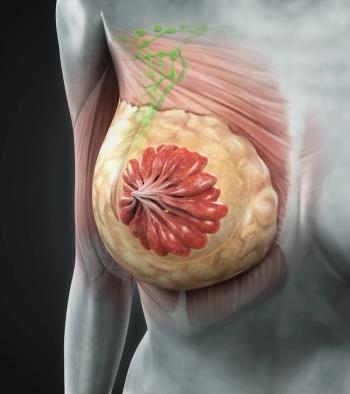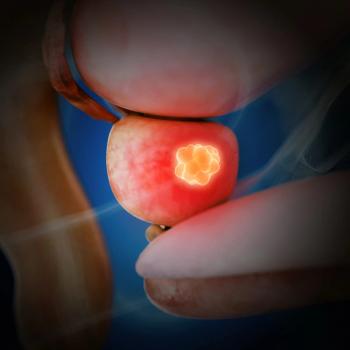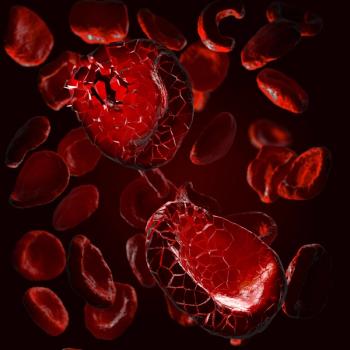
Oncology NEWS International
- Oncology NEWS International Vol 8 No 2
- Volume 8
- Issue 2
Interferon-alfa Added to COPA Improves Survival in NHL Patients
MADISON, Wisconsin-The addition of interferon-alfa to the COPA regimen (cyclophosphamide, 600 mg/m²; vincristine, 1.2 mg/m²; prednisone, 100 mg; and doxorubicin, 50 mg/m²) improves survival in patients with clinically aggressive low- and intermediate-grade non-Hodgkin’s lymphoma (NHL), Richard Smalley, MD, of Synertron, Inc., said at the American Society of Hematology meeting. He presented 10-year follow-up results of an ECOG trial begun in 1986.
MADISON, WisconsinThe addition of interferon-alfa to the COPA regimen (cyclophosphamide, 600 mg/m²; vincristine, 1.2 mg/m²; prednisone, 100 mg; and doxorubicin, 50 mg/m²) improves survival in patients with clinically aggressive low- and intermediate-grade non-Hodgkins lymphoma (NHL), Richard Smalley, MD, of Synertron, Inc., said at the American Society of Hematology meeting. He presented 10-year follow-up results of an ECOG trial begun in 1986.
Patients with stage III or IV disease, IWF (International Working Formulation) groups C, D, and E, and bulky or symptomatic IWF groups A or B non-Hodgkins lymphoma all received a cycle of COPA every 28 days for 8 to 10 cycles. The 291 patients were then randomized to receive interferon-alfa, 6 MU/m² on days 22 to 26 of each cycle or no other therapy.
Patients who responded or were stable were followed every 2 to 4 months for relapse and annually for survival, Dr. Smalley said. There were some dose de-escalations of the cyclophosphamide and doxorubicin because of myelosuppression. Everyone on the study received the full dose of prednisone and interferon-alfa. The interferon-alfa toxicity was minimal and acceptable, he said.
Previous reports showed an overall response rate of 86% in both treatment groups (COPA vs I-COPA). The current analysis shows that the addition of interferon-alfa induced a prolonged time to treatment failure, with a median of 1.9 years for the COPA group and 2.9 years for the I-COPA group (P = .008). Survival was also better in the I-COPA group; 7.9 years vs 5.7 years with COPA alone (P = .04).
Subset analyses showed a trend for increased survival with interferon-alfa for both intermediatedisease and low-grade disease, but the differences did not reach statistical significance.
There was a significant difference in time to treatment failure favoring the interferon-alfa arm in patients with low-grade lymphoma (IWF A, B, C) (P = .005) and in those with follicular lymphoma (IWF B, C, D) (P = .009).
From this analysis, Dr. Smalley said, it seems that interferon-alfa when added to COPA improves survival in patients with clinically aggressive low-grade NHL and in D and E intermediate-grade NHL. My conclusion is that if youre using a doxorubicin-type regimen, interferon-alfa does improve survival, he said.
Articles in this issue
almost 27 years ago
Paclitaxel Plus Mitoxantrone for Poor-Prognosis Breast Canceralmost 27 years ago
Faslodex, Pure Antiestrogen, Studied in Tamoxifen-Resistant Breast Canceralmost 27 years ago
LHRH Agonist Plus Tamoxifen Improves Outcome in Young Metastatic Patientsalmost 27 years ago
Pros and Cons of Different Approaches to Chemoradiationalmost 27 years ago
Less Cardiotoxicity With Liposomal Doxorubicinalmost 27 years ago
Optimizing Docetaxel Tolerability in Anthracycline-Resistant Breast Canceralmost 27 years ago
Doxorubicin Appears to Change Natural History of HER-2+ Cancer’salmost 27 years ago
Tamoxifen After Surgery/RT Decreases Local Recurrence Risk in DCIS PatientsNewsletter
Stay up to date on recent advances in the multidisciplinary approach to cancer.





















































































